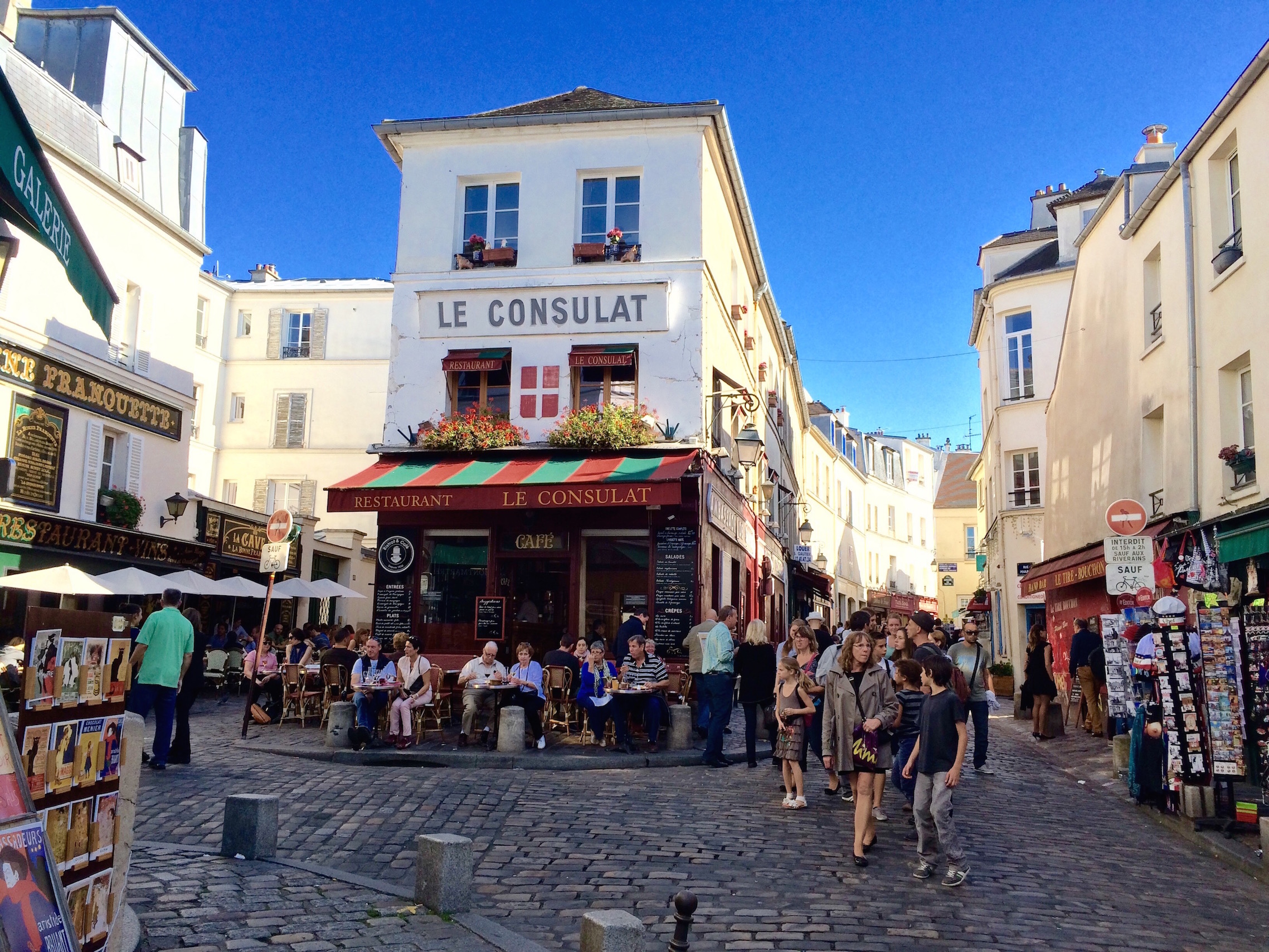Photo courtesy of Galina Tahchieva @ DPZ
ALMOST ALL STREETS IN PARIS now have speed limits of 20 or 12.5 miles per hour (30 or 20 kph). The rue Norvins in Montmartre was already slower than that. Why? Not because of a city-set speed limit or police enforcement, but because of the natural design speed of the street.
The narrow roadway, the poor lines of sight, the rough cobblestones, the unforgiving stone bollards at the edge of the street, the lack of traffic signs (there’s only one, which limits cars to those belonging to residents between 3 pm and 2 am), and most of all, the free-range pedestrians in the middle of the street—these all produce a space that makes drivers unacomfortable driving quickly.
English authorities are introducing a number of shared space streets there. I haven’t seen most of them, so I can’t say much about the Sea of Change film that makes the proposal that new shared space streets in England are frequently unsafe for the blind and disabled. That’s obviously an important issue—if we are going to make slow streets that use slow speed and a lack of the traffic engineer’s separation of car and pedestrian to make safer streets, then we need to make them safer for everyone.
Some of the cars on Exhibition Road in Sea of Change seem to be going well over 25 miles per hour. Standards are still evolving, but any street where drivers feel comfortable going over 20 miles per hour is not a shared space. A true shared space is the type that the pioneering traffic engineer Hans Monderman used to argue for. In those shared spaces, Monderman (who is dead now), used to famously lead the press on tours which featured him walking backwards into the street, to demonstrate that the slow cars in the shared space would never hit him—and they never did. Blind and disabled people should be safe on the same streets.
Work needs to be done to see what would also make the blind and disabled both be and feel safe in shared space. In the case of the street above, smooth crosswalks seem like a good idea, because the rough cobblestones can be difficult to walk on, and the difference in texture would mark a crosswalk, for both the blind and for drivers. That’s not to say that smooth crosswalks are all that’s needed on truly slow streets. This is an issue that needs study.
What’s Your Favorite Slow Street in the US?
Slow Street of the Day
P.S.: A short discussion online of what “shared space” means in the UK confirms the idea that “there is no such thing as a definitive shared space design.”
- The Department for Transport consider a shared space to be a street or place designed to improve pedestrian movement and comfort by reducing the dominance of cars and enabling all users to share the space rather than follow the clearly defined rules implied by more conventional designs.
- Generally, it involves demarcations between vehicle traffic and pedestrians, usually by removing fixtures such as curbs, road markings, signs, and regulations.
- In Europe, shared space is often used to smooth traffic flow and reduce delays at major junctions.
- In the UK, it is usually applied to links and minor junctions with the aim of allowing pedestrians to move more freely within the space.
- But there is no such thing as a definitive shared space design.
- The way a street performs will depend on its individual characteristics, the features included and how these features work in combination.
- In Ashford, one of the early pioneers of such a scheme, the ring road was turned into shared space in 2008.
- Critics claimed it would be dangerous for blind people, but statistics showed accidents have actually dropped since it was brought in.
